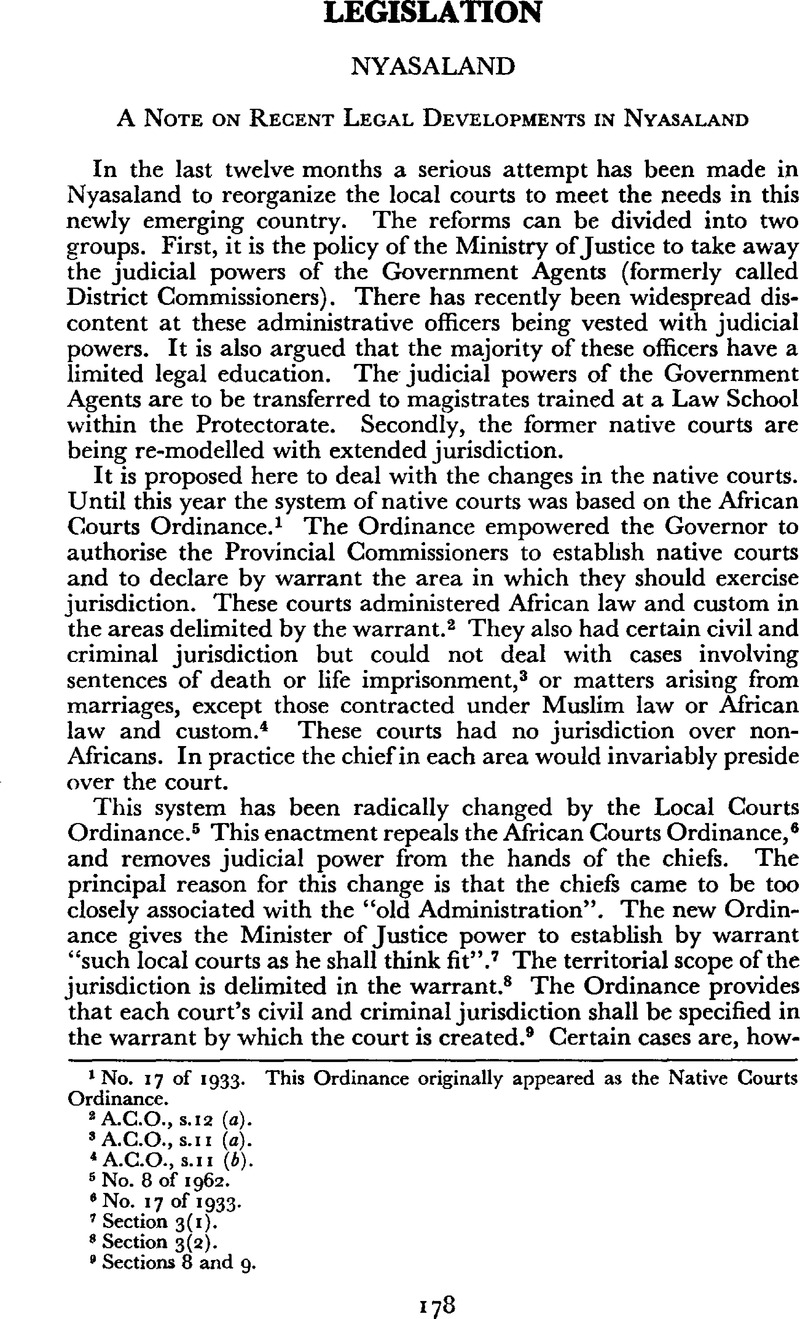Published online by Cambridge University Press: 28 July 2009

page 178 note 1 No. 17 of 1933. This Ordinance originally appeared as the Native Courts Ordinance.
page 178 note 2 A.C.O., s.12 (a).
page 178 note 3 A.C.O., s.11 (a).
page 178 note 4 A.C.O., S.11 (b).
page 178 note 5 No. 8 of 1962.
page 178 note 6 No. 17 of 1933.
page 178 note 7 Section 3(1).
page 178 note 8 Section 3(2).
page 178 note 9 Sections 8 and 9.
page 179 note 1 Section 11 (a).
page 179 note 2 Section 12 (d).
page 179 note 3 Proviso to s.12 (d).
page 180 note 1 Section 24 (1) (a) and (b) training.
page 180 note 2 Section 24 (1) (c). This is carried out at the Institute of Public Administration at Mpemba. The president and clerk of each local court are trained together, where possible.
page 180 note 3 There are 180 local courts at present constituted in Nyasaland. The Presidents of 40 of these have completed a course at Mpemba at the time of writing.
page 180 note 4 This section gives the Local Courts Commissioner power to order a retrial or to transfer cases to another court whenever he considers it necessary. This is quite distinct from the ordinary right of appeal.
page 180 note 5 Section 36.
page 180 note 6 Section 32.
page 180 note 7 Section 33 (1).
page 180 note 8 Section 34.
page 181 note 1 There was a similar provision in the old African Courts Ordinance.
page 181 note 2 The courts in question were the Blantyre, Zomba, and Lilongwe Urban Local Courts.
page 182 note 1 There is some doubt as to whether this subsection applies to the local appeal courts. It is submitted that it does. Section 2 of the Local Courts Ordinance (the interpretation section) defines a local court as “any court established under this Ordinance”. As the local appeal courts are established under the Ordinance it is difficult to avoid the conclusion that the subsection must apply to them. This is not unreasonable because the staff of the local appeal courts have no more legal training than the ordinary local court presidents.
page 182 note 2 It was suggested in debate that the prohibition against legal representation infringed the Constitution. This is clearly not so. The relevant section of the constitution reads as follows:
“8. (2) (d). Every person who is charged with a criminal offence shall be permitted to defend himself before the court in person; or at his own expense by a legal representative of his own choice.’
“8. (12) (4). Nothing contained in or done under the authority of any law shall be held to be inconsistent with or in contravention of subsection 2 (d) of this section to the extent that the law in question prohibits legal representation in a Court established by or under” the Local Courts Ordinance.
page 182 note 3 Cap. 18.
page 182 note 4 Section 2.
page 183 note 1 Section 4 (1) and (2).
page 183 note 2 Cross, Evidence, p. 128.